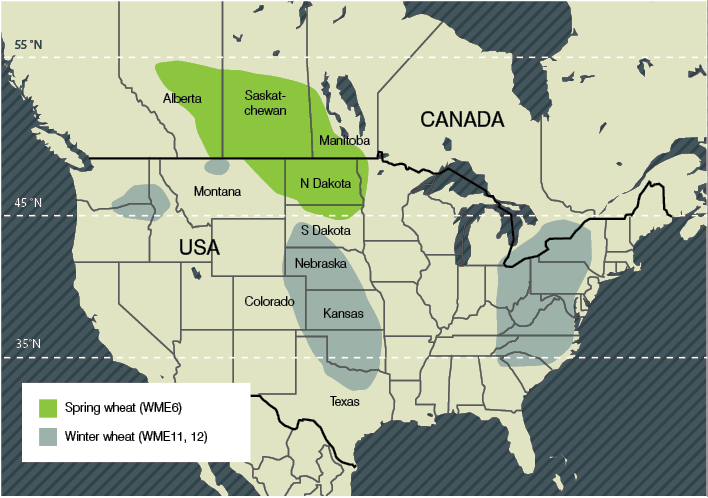-
Chapter 3: INDUSTRIAL LOCATION FACTORS - WOOL, JUTE, WHEAT AND CORN INDUSTRY
Wool Industry
Wool industry needs favorable climatic condition like dry climate. The damp,cold conditions in Northern hemisphere are unsuitable for it and so Southern hemisphere leads in wool production. In countries like Australia the climate is dry and so agriculture not feasible. Sheep rearing has better opportunities as sheep can survive in adverse conditions. The high number in which sheep breeding was done meant better economies of scale i.e. less cost per unit due to high quantity of rearing.Thus Australia became dominant in the wool trade.
However due to low demand in Australia for woolen clothes most of the wool is exported. Australia doesn't have the skilled labor for making woolen garments.
Rise and Fall of Wool Industry in Britain
Yorkshire was known for wool industry due to local source of raw material. Water supply and electric supply also provided. But later the wool manufacturing declined as it couldn't compete with wool imports from southern hemisphere.
Indian industry also was concentrated in the northern parts as market for woolen clothes was in north. The Indian wool was coarse and had to be mixed with Australian wool for making garments.Wool was non perishable and non bulky and weight loss wasn't a factor so the manufacturers could be located independent of the raw material location. Hence industry was concentrated close to the market.
WOOLLEN TEXTILES
Woollen textile is. one of the oldest industries of India. During the ancient and medieval periods woollen clothes were manufactured at the cottage industry level.
India is not self sufficient in quality wool production. Good quality wool is, however, imported from Australia.
This industry provides employment to 27 lakh workers in the wide spectrum of activities
Problems of the Woollen Textile Industry:
Shortage of quantity and quality of wool
Obsolete machinery
Competition with more advanced countries
Competition with synthetic fibres
Shortage of power
Low quality of goods, Lack of market and Strikes by the workers
Jute Industry
Jute was grown prior to partition in India in Bengal. It was the only crop that could withstand flooding in the region. The energy requirements for jute processing were met from coal fields near Bengal. The labor intensive technique was possible due to cheap and abundant labor from nearby states. Kolkata was the Capital of India till 1911 and so no shortage of financial institutions for capital needs.Water requirement for dyeing, bleaching of jute cloth met from Hoogly river.
JUTE TEXTILE
India is the largest producer and second largest exporter of jute goods in the world, contributing about 35 per cent of the total output of the world. It is a labour intensive industry which directly and indirectly provides job to more than 4 lakh people. The industry is, however, facing a tough competition from synthetics and its export market is shrinking.
The industry made tremendous progress in the later part of the 19th century. Subsequently, the industry was boosted by the two world wars. The industry suffered a serious setback in 1947 due to the partition of the subcontinent. After partition about 80 per cent of the jute growing areas went to East Pakistan (Bangladesh), while nearly 90 per cent jute mills remained in India.
Jute industry is mainly a raw material based industry. Most of the jute mills are in the jute producing areas of the country. West Bengal alone accounts for-85 per cent of the tota] jute production of the country. The high concentration of Jute mills in West Bengal is because of the following factors:
Availability of raw material: Jute cultivation needs highly productive, well-drained soils and hot and humid climate. These conditions are ideally available in many tracts of West Bengal and lower Assam.
Cheap and skilled labour is available in West Bengal, one of the most densely populated state of the country.
Cheap water transport through the Hugli river.
Availability of coal from the Raniganj coal-mines.
Export facility through the port of Kolkata and Haldia.
Jute industry in India is essentially export-oriented. India stands second after Bangladesh in the export of jute and jute products.
Challenges:
- Majority of jute growing areas went to Pakistan after partition.
- Due to opposition from labor unions Indian businessmen became reluctant to invest in modernization.The Bangladesh industry grew and began to compete with Indian products.
- Competition from cheaper synthetic fibers.
- Lack of marketing strategy to showcase the benefits of biodegradable jute products to environmentally conscious users in foreign markets.
Wheat Industry
Prairies are known as "Granaries of the World".Factors:
- Soil of prairies has high phosphorous content and so good for wheat. The centuries of rotting grass has made the soil fertile. Topography suitable for wheat cultivation as wheat cannot tolerate stagnant water. Large landholdings mean that machines can be used at every stage this is important as laborers are less unlike in Asia.
- Rail and road connectivity is high and even produce from remote regions can reach market.
- Food processing infrastructure present at railways e.g. Grain elevator storage where wheat is cleaned, graded, processed and sold. Railways are also connected to waterways for transport and export.
- Canadian wheat board is a statutory body that is sole purchaser and exporter. Farmers are given schedules to minimize price fluctuations and distribution inefficiencies. Quality control for exported wheat is seen.

Fig 1: Wheat producing areas.
Rice Industry in China
China is major producer of rice
Factors:
- The climate is humid and good rainfall ensures two sowing seasons for rice.
- Sericulture is done alongside rice farming and waste from sericulture is given to rice farming.
- Shanghai port is important for export and Yangtze river is an important waterway and connects many cities.
- Labor is abundant.
- Diesel operated tractors for ploughing, special rice planters and high yielding varieties of seeds.
- Collectivization system promoted by the Government: Tier I was commune that had 3000 households and was responsible for supervision of tiers below it. Tier II had 300 households and worked to lease land to teams, infrastructure development etc. Tier III was team with 30 households that grew crops as per quota.
- Reforms were made in this system and credit was given directly to farmers, if grains produced in excess of quota then it could be sold in market. Farmers were allowed ownership of agro-machinery.
China has more area under irrigation and grows food crops on its best lands unlike India that grows cash crops.
US Corn and Livestock Belt
US farmers prefer to grow corn over wheat as it has higher productivity than wheat. The corn is used to fatten animals. The meat is then exported.
Government also subsidizes inputs to agriculture. Farm holdings are large so mechanization is employed at every stage e.g: Combines for threshing, aeroplanes for spraying insecticides.
Road, rail connectivity to farms and markets is high. Exports to foreign markets can be done from New York ports.
Apart from corn soya bean too is grown as it has many applications.

Fig 2: Corn belt in USA
Questions of UPSC Mains
Why China is the major producer of Rice?
Why Jute industry flourished in India?
Factors needed for the growth of wool industry
Factors needed for the growth of wheat industry
Factors needed for the growth of US Corn and livestock industry